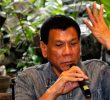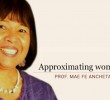The trouble with the Philippine educational system is that it is foreign-dictated and it is now unmasked when the country’s Commission on Higher Education chief herself, Patricia B. Licuanan. Licuanan was quoted saying that Filipino youth does not have to enter college.
Randomly, when lowly people are asked on aspirations, there emerges only one — for their children to reach college, more than any other possessions. For poor families, glory is attained by the bachelor’s degree program the young chooses. It is the only pamana (inheritance) for the next generation – a tradition to confront poverty.
Yet, there is a halting scheme now, a twin of repression and colonialism- the K-12! The Education Act of 1982 is now boldly consolidated with the integration of two levels in the secondary program. The junior and senior high school are designed to screen those who pursue college education. As if sifting all those elements to urge them acquire technical and vocational skills ready for jobs abroad.
When in the past, the young people with their parents doctored their ages to qualify for overseas job placement even as trainings and exposures are short of the job specifications, now the state education experts make this easy. Upon graduation from senior high school, age qualification is no longer a problem and yes, the education and training are formally documented to supposedly satisfactorily comply with the global standards. Thus, overseas contract work attracts as the gateway to greener pasture than serving the native land for its own progress and liberation.
But who determines all these? Why do we submit to these sorts of requirements? Why does the CHED Commissioner emphatically subscribes to the building up of K-12 and condescending to those aiming to fill the spaces of colleges and universities?
The United States of America endorses its K-12 to the scholars of the Philippine educational system together with its allies, like the Asian Development Bank. In effect it also brings college reforms where fees are beyond the reach of ordinary families and courses reduced to align to a subservient economy that strengthens the foreign language as it scraps the teaching of Filipino as a national language.
Education is exclusive and no longer a public good. It subscribes to the idea that low-income groups are far better becoming producers of cheap labor to the world market with a set of competitive technical skills. Historically, the Philippine educational system adopts the colonial path and at its current state of arts dictated upon by the neoliberal policies as advance by developed nations which are in control of all global economic transactions. The global scheme of privatization, deregulation and contractualization is completely drawn up in the conceptualization of K-12. It is the completion of an educational cycle towards compliance to undergraduate degree programs where only a few need to be polished intellectually. All the rest maintain to be docile and uncomplaining.
Further, in today’s social landscape, higher education is not a right. It is rather a choice only for the rich to enrich themselves. Licuanan in this sense betrays her women compatriots who journeyed with her when she was espousing feminist thoughts in trying to understand inequalities. She has ceased to be part of a “women’s movement” she was known to be taking a role while in the academia. Indeed, only a few who demonstrate feminism become true to its tenets and purpose on earth. The real ones are those who truly work out with the masses the proactive interventions in realizing planned change that will contribute to ending poverty and eliminating social inequalities. Class does not simply matter at this angle, but strongly defines the line of whom to serve to the fullest.
With the legalization of K-12, the trajectory of the education system in the Philippines is exposed to further scrutiny. The tune of K-12 education reforms rising in the halls of higher education distracts. Where is sustainable development when education is a private commodity available only to those who’ll pay the asking prices and directed to foreign interests in the name of world’s division of labor?
Where to new SUSTAINABLE DEVELOPMENT GOALS? (SDGs Beyond 2015 are into firming up process by September, 2015 at the United Nations).










